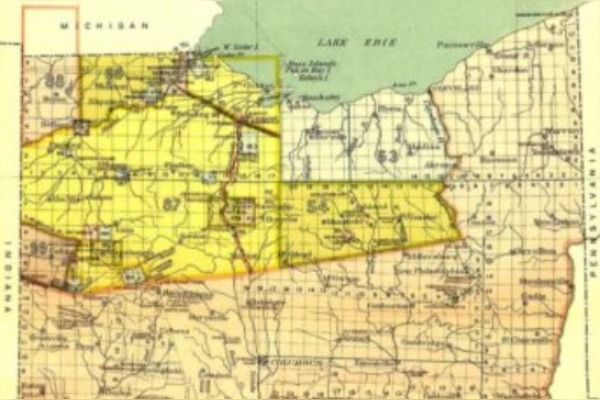Wooster, Ohio: A History of Communities & Connections
Wooster is a small city in northeast Ohio, a short drive from Canton and Akron, Cleveland and Columbus. A county seat in an agricultural region with a downtown lined with buildings of the late nineteenth century, it can come across to visitors as a quaint and secluded place. But it is site of rich developments and striking contrasts across its history.
This permanent exhibit tells the history of this area and this city from the first human settlement some 10,000 years ago up to the present. The story is organized around the themes of communities and connections. Communities: because many different peoples and groups have made their homes – and built communities of belonging – in this place. Connections: because this small city has been tied to the region and the nation and the world in remarkable and ongoing ways.
Whether you are a visitor to this city, a transplant, or a life-long resident with deep roots in the region we hope you will discover something new, take away a sense for the many peoples who have made a home here, and understand the many ties that have connected this place with a wider world.

Early Indigenous Communities
Explore the land that would one day become Wayne County and meet the groups, such as the Hopewell, Adena, and Fort Ancient, who called it home from 10,000 BCE to when European colonists arrived in 1650 CE.

Indigenous Communities in the Era of Contact
When European settlers moved into Northeast Ohio in the 1700s, they encountered the Shawnee, Delaware (Lenape) and the Wyandot. Learn more about these tribes and their fates after their removal from the area.

Early European Settlement
Wooster was founded in 1808 by a few ambitious surveyors. However, the beginnings of the city were modest and life as a pioneer on the Ohio frontier was often challenging.

Making of a Small Midwestern City
Late 19th century Wooster’s downtown bustled with businesses and entertainment. Wooster blossomed into a full-fledged city that was more connected to the global economy than ever before.

New Communities, New Connections
After WWI, Wooster expanded with new residents from across the world and new businesses that brought greater opportunities. However, there was also backlash against these rapid social and economic changes.

An Era of Change
After WWII, the United States reevaluated itself socially and politically. Wooster was no exception. Residents engaged with national issues such as the Civil Rights Movement and the Kent State shooting, as well as local tragedies like the 1960 Flood.

Wooster Today
In the 2000s, Wooster has seen the loss of some of its major employers, such as Rubbermaid, but also a revitalization of its downtown and an influx of new residents and businesses. Today, Wooster enjoys this growth but also deals with challenges, both local and national.